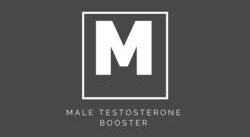At some point in their lives, men may experience a decrease in testosterone levels, leading to a range of symptoms such as decreased sex drive, fatigue, and muscle mass loss. As a result, many men turn to testosterone replacement therapy (TRT) to alleviate these symptoms and improve their overall quality of life. However, with the cost of TRT being significant, it’s natural to wonder if it’s worth the investment. In this article, we will explore the benefits and drawbacks of TRT to determine if it’s worth the cost.
- Benefits of TRT
- Drawbacks of TRT
- Is Testosterone Replacement Therapy risky?
- What is the Best Form of Testosterone Replacement Therapy?
- What are the costs of different types of TRT?
- Which type of TRT is the most effective?
- How often do I need to take TRT?
- How much will 100 mg of testosterone raise levels?
- How long does it take to get testosterone replacement therapy?
- How many men do testosterone replacement therapy?
- Do You Have to Stay on TRT Forever?
- Will my natural testosterone come back after TRT?
- FAQ Section
- Is TRT Worth the Cost?
- Conclusion
Benefits of TRT
TRT can offer a range of benefits for men with low testosterone levels. One of the most significant benefits of TRT is an improvement in sex drive and erectile function. Studies have shown that TRT can increase sexual desire and the frequency and duration of erections, leading to an overall improved sexual experience.
In addition to improving sexual function, TRT can also improve muscle mass, reduce body fat, and increase bone density. This is especially important for older men who are at a higher risk of developing osteoporosis, a condition characterized by weak and brittle bones.
TRT can also lead to an increase in energy levels, reducing fatigue and improving overall vitality. This can be particularly beneficial for men who struggle with low energy levels and find it challenging to complete daily activities.
Drawbacks of TRT
While TRT can offer a range of benefits, it’s essential to consider the drawbacks before deciding if it’s worth the cost. One of the most significant drawbacks of TRT is the potential for side effects, including acne, hair loss, and mood swings.
TRT can also increase the risk of developing cardiovascular disease, sleep apnea, and prostate cancer. As a result, it’s crucial to work closely with a medical professional when undergoing TRT to monitor any potential side effects and adjust treatment accordingly.
Another significant drawback of TRT is the cost. TRT can be expensive, with treatments ranging from a few hundred to several thousand dollars per year. It’s essential to weigh the cost of TRT against the potential benefits to determine if it’s worth the investment.
Is Testosterone Replacement Therapy risky?
Testosterone Replacement Therapy (TRT) has become an increasingly popular treatment option for men experiencing low testosterone levels. However, with any medical treatment, there are always risks and potential side effects to consider. The decision to undergo TRT should not be taken lightly, and it is essential to have a full understanding of the potential risks involved.
One of the main concerns with TRT is the potential risk of developing cardiovascular disease. Studies have shown that TRT may increase the risk of heart attack, stroke, and other cardiovascular events in men. While the risk appears to be small, it is still a concern and should be discussed with a healthcare professional before starting TRT.
Another risk associated with TRT is the potential for blood clots. Testosterone can increase the number of red blood cells in the body, which can lead to an increased risk of blood clots. Blood clots can be life-threatening, and it is essential to monitor for signs of blood clots during TRT.
TRT has also been associated with an increased risk of prostate cancer. While the evidence is inconclusive, it is still a concern for many men considering TRT. It is important to discuss this risk with a qualified healthcare professional and undergo regular prostate exams during TRT.
In addition to these risks, TRT can also cause a variety of side effects, including acne, hair loss, breast enlargement, and sleep apnea. It is essential to discuss these potential side effects with a healthcare professional before starting TRT.
TRT is not a one-size-fits-all treatment option. Each individual has a unique medical history, lifestyle, and personal preferences that can impact the suitability of TRT. It is crucial to consult with a qualified healthcare professional who specializes in hormone therapy to determine if TRT is a suitable treatment option for you.
TRT can be a beneficial treatment option for men experiencing low testosterone levels. However, it is essential to be aware of the potential risks and side effects involved. It is crucial to discuss these risks with a qualified healthcare professional and make an informed decision that is best for your individual needs and circumstances. While TRT can improve the quality of life for some men, it is not a risk-free treatment option and should not be taken lightly.
What is the Best Form of Testosterone Replacement Therapy?
Testosterone replacement therapy (TRT) is a treatment that doctors prescribe to males with low testosterone levels and symptoms of hypogonadism, such as fatigue, sexual dysfunction, and reduced muscle mass. TRT can help restore the levels of testosterone in the blood and improve various aspects of health and well-being.
There are different types of TRT available, such as injections, patches, gels, pellets, nasal sprays, and oral medications. Each type has its own advantages and disadvantages, such as cost, convenience, side effects, and effectiveness. The best form of TRT for you may depend on your personal preferences, medical history, and doctor’s recommendation.
To get TRT, you need to have a prescription from a doctor who will evaluate your symptoms, blood tests, and other factors to determine if you are a suitable candidate for TRT. You may also need to have regular follow-up visits and blood tests to monitor your response to TRT and adjust your dosage if needed.
TRT is not a cure-all for aging or other health problems. It may have some risks and complications, such as the increased risk of blood clots, prostate cancer, heart problems, sleep apnea, acne, and mood swings. You should discuss the benefits and risks of TRT with your doctor before starting the treatment. You should also inform your doctor of any other medications or supplements you are taking, as they may interact with TRT.
What are the costs of different types of TRT?
The costs of different types of TRT may vary depending on various factors, such as the type of medication, the dosage, the mode of administration, the insurance coverage, and the doctor and laboratory fees¹. Here are some approximate ranges of costs for different types of TRT per month:
- Injections: $30-$100
- Patches: $200-$400
- Gels: $300-$500
- Pellets: $300-$800
- Nasal sprays: $300-$500
- Oral medications: $50-$100
- Creams: $60-$500
These costs may not include the initial consultation, blood tests, follow-up visits, or other medications that may be prescribed along with TRT. You should check with your insurance provider and your doctor to find out the exact costs of TRT for you. You may also want to compare different options and see which one suits your budget and lifestyle best.
Which type of TRT is the most effective?
The effectiveness of different types of TRT may vary depending on the individual’s response, preference, and goals. Some general factors that may affect the effectiveness of TRT include:
- The absorption rate of the medication into the bloodstream
- The duration of action and frequency of administration
- The convenience and ease of use
- The potential side effects and interactions
- The cost and availability
According to some sources, testosterone injections are one of the most effective and commonly used forms of TRT, as they allow for precise control of the dosage, direct absorption into the bloodstream, and long-lasting effects. However, injections may also cause pain, swelling, bruising, and infection at the injection site, and require regular visits to a doctor or clinic.
Other forms of TRT, such as patches, gels, creams, nasal sprays, pellets, and oral medications, may have different advantages and disadvantages in terms of effectiveness. For example, patches and gels may be more convenient and discreet than injections, but they may also cause skin irritation, transfer to others through contact, or have lower absorption rates. Pellets may provide a steady release of testosterone for several months, but they require a minor surgical procedure to implant them under the skin. Nasal sprays may be easy to use and fast-acting, but they may also cause nasal irritation or bleeding. Oral medications may be simple and convenient, but they may also have more liver toxicity or lower bioavailability than other forms.
Ultimately, the best form of TRT for you may depend on your personal preference, medical history, and doctor’s recommendation. You should discuss the pros and cons of each type of TRT with your doctor before starting the treatment. You should also monitor your response to TRT and report any changes or concerns to your doctor. You may need to try different types of TRT until you find the one that works best for you.
How often do I need to take TRT?
The frequency of taking TRT may depend on the type of TRT you are using and your doctor’s prescription. Here are some general guidelines for how often you need to take TRT based on the type:
- Injections: Every 1-2 weeks for short-acting injections, or every 2-10 weeks for long-acting injections
- Patches: Every day
- Gels: Every day
- Pellets: Every 3-6 months
- Nasal sprays: Three times a day
- Oral medications: Every day
- Creams: Every day
You should follow your doctor’s instructions on how often and how much TRT to take. You should also have regular blood tests to monitor your testosterone levels and adjust your dosage if needed. You should not stop taking TRT without consulting your doctor, as this may cause withdrawal symptoms or a rebound effect. You may need to take TRT for a long time, depending on your symptoms, age, and response to the treatment.
How much will 100 mg of testosterone raise levels?
The amount that 100 mg of testosterone will raise levels varies from person to person. Testosterone replacement therapy (TRT) is a highly personalized treatment, and the dosage required to achieve optimal testosterone levels can vary significantly based on individual factors such as age, weight, and overall health.
That being said, a typical starting dose for TRT is 100 mg per week, which is usually administered via injection. This dose may be adjusted based on individual needs and can be increased or decreased as necessary to achieve optimal testosterone levels.
Studies have shown that testosterone levels can increase by an average of 400-500 ng/DL (nanograms per deciliter) in men receiving 100 mg of testosterone per week. However, it is essential to note that individual results can vary, and some men may require a higher or lower dosage to achieve optimal testosterone levels.
It is also important to monitor testosterone levels regularly during TRT to ensure that levels are within a healthy range. Overdosing in testosterone can have serious health consequences, including an increased risk of heart attack, stroke, and blood clots. Underdosing can result in suboptimal results, which can negatively impact the quality of life.
In addition to monitoring testosterone levels, it is also essential to monitor for potential side effects of TRT, including acne, hair loss, breast enlargement, and sleep apnea. It is crucial to discuss any concerns or symptoms with a healthcare professional to ensure that TRT is being administered safely and effectively.
In conclusion, the amount that 100 mg of testosterone will raise levels varies from person to person. While studies have shown that a typical starting dose of 100 mg per week can increase testosterone levels by an average of 400-500 ng/DL, individual results can vary. It is important to work with a qualified healthcare professional to determine the optimal dosage for your individual needs and to monitor testosterone levels and side effects regularly during TRT.
How long does it take to get testosterone replacement therapy?
Starting testosterone replacement therapy can be a life-changing decision and one that many people are eager to begin as soon as possible. The process of starting testosterone replacement therapy can vary depending on several factors, such as the individual’s medical history, age, and the method of administration chosen.
Typically, the process of starting testosterone replacement therapy can take a few weeks to a few months. This timeline includes the initial consultation with a healthcare provider, completing necessary lab work and tests, and obtaining a prescription for testosterone. In some cases, the process may take longer if additional medical evaluations or consultations are needed.
It’s important to remember that the length of time it takes to start testosterone replacement therapy can vary depending on the individual circumstances, and there is no one-size-fits-all timeline. However, the potential benefits of starting testosterone replacement therapy, such as increased energy, improved mood, and a better quality of life, can make the process well worth the wait.
How many men do testosterone replacement therapy?
Testosterone replacement therapy is a common treatment option for men who have low levels of testosterone. According to recent studies, the number of men who undergo testosterone replacement therapy is steadily increasing. In fact, it’s estimated that millions of men in the United States alone are currently receiving testosterone replacement therapy.
The exact number of men who do testosterone replacement therapy (TRT) is not easy to determine, as different sources may have different criteria for defining low testosterone levels and prescribing TRT. However, some estimates suggest that millions of men in the United States use TRT to restore low testosterone levels and improve their quality of life. According to a 2017 study, the prevalence of TRT use among men aged 40 years and older increased from 0.81% in 2002 to 2.91% in 2013.
Another study reported that the number of TRT prescriptions in the United States increased by more than fourfold from 2000 to 2011. However, some experts believe that TRT is overprescribed or misused by some men who do not have a clear indication for it or who seek it for non-medical reasons, such as enhancing performance or appearance. Therefore, the actual number of men who do TRT may be higher or lower than the reported figures.
While the number of men undergoing testosterone replacement therapy is significant, it’s important to note that each individual’s experience is unique. Some men may choose to undergo testosterone replacement therapy to alleviate symptoms such as low energy, decreased libido, or depression, while others may choose it to improve muscle mass or athletic performance.
Regardless of the reason for starting testosterone replacement therapy, it’s crucial to work closely with a healthcare provider to ensure that the treatment is safe and effective. Regular monitoring of testosterone levels, as well as any potential side effects or complications, is key to achieving the desired results.
Overall, the increasing number of men turning to testosterone replacement therapy highlights the importance of addressing low testosterone levels and the impact they can have on a man’s overall health and well-being.
Do You Have to Stay on TRT Forever?
One of the most common questions that men have about testosterone replacement therapy is whether or not they will have to stay on it forever. While the answer to this question can vary depending on individual circumstances, it’s important to understand the potential long-term implications of starting testosterone replacement therapy.
In some cases, testosterone replacement therapy may be a short-term solution to address symptoms of low testosterone, such as fatigue, decreased libido, or depression. However, in other cases, testosterone replacement therapy may be necessary for the long-term management of low testosterone levels.
It’s important to note that stopping testosterone replacement therapy abruptly can have negative consequences, including a rapid drop in testosterone levels, which can lead to a variety of symptoms such as low energy, mood changes, and decreased muscle mass.
If a decision is made to stop testosterone replacement therapy, it’s typically recommended to do so gradually under the supervision of a healthcare provider. This allows the body to adjust to the changes in testosterone levels and can help minimize potential side effects.
The decision to continue or stop testosterone replacement therapy should be made in close consultation with a healthcare provider and based on individual circumstances and goals. While testosterone replacement therapy can be a life-changing treatment option for many men, it’s important to carefully consider the potential long-term implications before making a decision.
Will my natural testosterone come back after TRT?
One of the biggest concerns that men have when considering testosterone replacement therapy is whether or not their natural testosterone levels will return after treatment. While the answer to this question can vary depending on individual circumstances, it’s important to understand the potential impact that testosterone replacement therapy can have on the body’s natural hormone production.
In some cases, testosterone replacement therapy may be a short-term solution to address symptoms of low testosterone, such as fatigue, decreased libido, or depression. In these cases, it’s possible that natural testosterone levels may return after treatment is completed.
However, in other cases, testosterone replacement therapy may be necessary for the long-term management of low testosterone levels. In these cases, it’s unlikely that natural testosterone production will return to pre-treatment levels, as the body’s natural hormone production can be suppressed by exogenous testosterone.
It’s also important to note that the length of time a man is on testosterone replacement therapy can impact the likelihood of natural testosterone production returning. Prolonged use of testosterone replacement therapy can lead to permanent changes in natural hormone production, which can make it difficult for the body to produce testosterone on its own.
Ultimately, the decision to start testosterone replacement therapy should be made in close consultation with a healthcare provider, who can provide guidance on the potential long-term implications of treatment. While testosterone replacement therapy can be a life-changing treatment option for many men, it’s important to carefully consider the potential impact on natural hormone production before making a decision.
FAQ Section
Question: Is 100 mg of testosterone per week safe?
Testosterone replacement therapy (TRT) is generally safe when administered under the guidance of a qualified healthcare professional. A starting dose of 100 mg per week is typically considered safe for most men, but individual results can vary, and it is essential to monitor testosterone levels and potential side effects regularly.
Question: Can TRT help with erectile dysfunction?
Yes, TRT can help improve symptoms of erectile dysfunction in men with low testosterone levels. However, it is important to determine the underlying cause of erectile dysfunction and to rule out other medical conditions before starting TRT.
Question: How long does it take to see results from TRT?
It can take several weeks to several months to see the full benefits of TRT, including improved energy, mood, and sexual function. It is essential to be patient and to work closely with a healthcare professional to monitor progress and adjust the dosage as necessary.
Question: Is TRT covered by insurance?
TRT may be covered by insurance, depending on the specific policy and the reason for treatment. It is important to check with your insurance provider to determine coverage and any out-of-pocket costs.
Is TRT Worth the Cost?
Ultimately, the decision of whether or not TRT is worth the cost is a personal one that should be made in consultation with a medical professional. While TRT can offer a range of benefits, it’s essential to consider the potential drawbacks, including side effects and cost.
However, for men who are struggling with low testosterone levels and experiencing symptoms such as decreased sex drive, fatigue, and muscle mass loss, TRT can offer significant benefits that can improve their overall quality of life. By working closely with a medical professional, men can determine if TRT is a suitable option for them and if it’s worth the investment.
Conclusion
In conclusion, TRT can offer a range of benefits for men with low testosterone levels, including improved sexual function, increased muscle mass, and reduced body fat. However, it’s essential to consider the potential drawbacks, including side effects and cost, before deciding if TRT is worth the investment.
Ultimately, the decision of whether or not TRT is worth the cost is a personal one that should be made in consultation with a medical professional. By carefully weighing the potential benefits and drawbacks, men can determine if TRT is a suitable option for them and if it’s worth the investment.
Sources:
- Testosterone Replacement Therapy (TRT): What to Know – Medical News Today. https://www.medicalnewstoday.com/articles/testosterone-replacement-therapy-trt
- The Different Types Of Testosterone Replacement Therapy. https://testocentral.com/the-different-types-of-testosterone-replacement-therapy/
- Testosterone therapy: Potential benefits and risks as you age. https://www.mayoclinic.org/healthy-lifestyle/sexual-health/in-depth/testosterone-therapy/art-20045728
- Best Testosterone Replacement Therapy Services 2023. https://www.menshealth.com/health/a42707320/testosterone-replacement-therapy-services/
- TRT: Uses, Side Effects, and Cost of Testosterone Replacement Therapy. https://www.healthline.com/health/trt
- Which Form of Testosterone Is Most Effective? TRT Injection. https://www.medicinenet.com/which_form_of_testosterone_is_most_effective/article.htm
- The Complete Guide to TRT for Men – Defy Medical. https://www.defymedical.com/blog/the-complete-guide-to-trt-for-men/
- Testosterone Replacement Therapy (TRT): What to Know – Medical News Today. https://www.medicalnewstoday.com/articles/testosterone-replacement-therapy-trt
- Types of Testosterone Injections | Which One Is The Best? – HRTGuru. https://hrtguru.com/types-of-testosterone-injections-and-their-differences/
- Testosterone Replacement Therapy: Myths and Facts – WebMD. https://www.webmd.com/men/replacement-therapy
- Testosterone therapy: Potential benefits and risks as you age. https://www.mayoclinic.org/healthy-lifestyle/sexual-health/in-depth/testosterone-therapy/art-20045728
- Treating low testosterone levels – Harvard Health. https://www.health.harvard.edu/mens-health/treating-low-testosterone-levels
- A new look at testosterone therapy – Harvard Health. https://www.health.harvard.edu/mens-health/a-new-look-at-testosterone-therapy
- 18 Things You Need to Know About TRT – T NATION. https://www.t-nation.com/sex-hormones/tip-18-things-you-need-to-know-about-trt/
- Testosterone Replacement Therapy (TRT): What to Know – Medical News Today. https://www.medicalnewstoday.com/articles/testosterone-replacement-therapy-trt
- How Long Do You Have to Stay on Testosterone Therapy? – Kingsberg Medical. https://www.kingsbergmedical.com/how-long-do-you-need-to-take-testosterone-therapy/
The Truth About Testosterone and Aging: What You Need to Know
Beyond Masculinity: Exploring the Diverse Functions of Testosterone
11 Best Male Testosterone Boosters That May Improve Your Performance and Health





